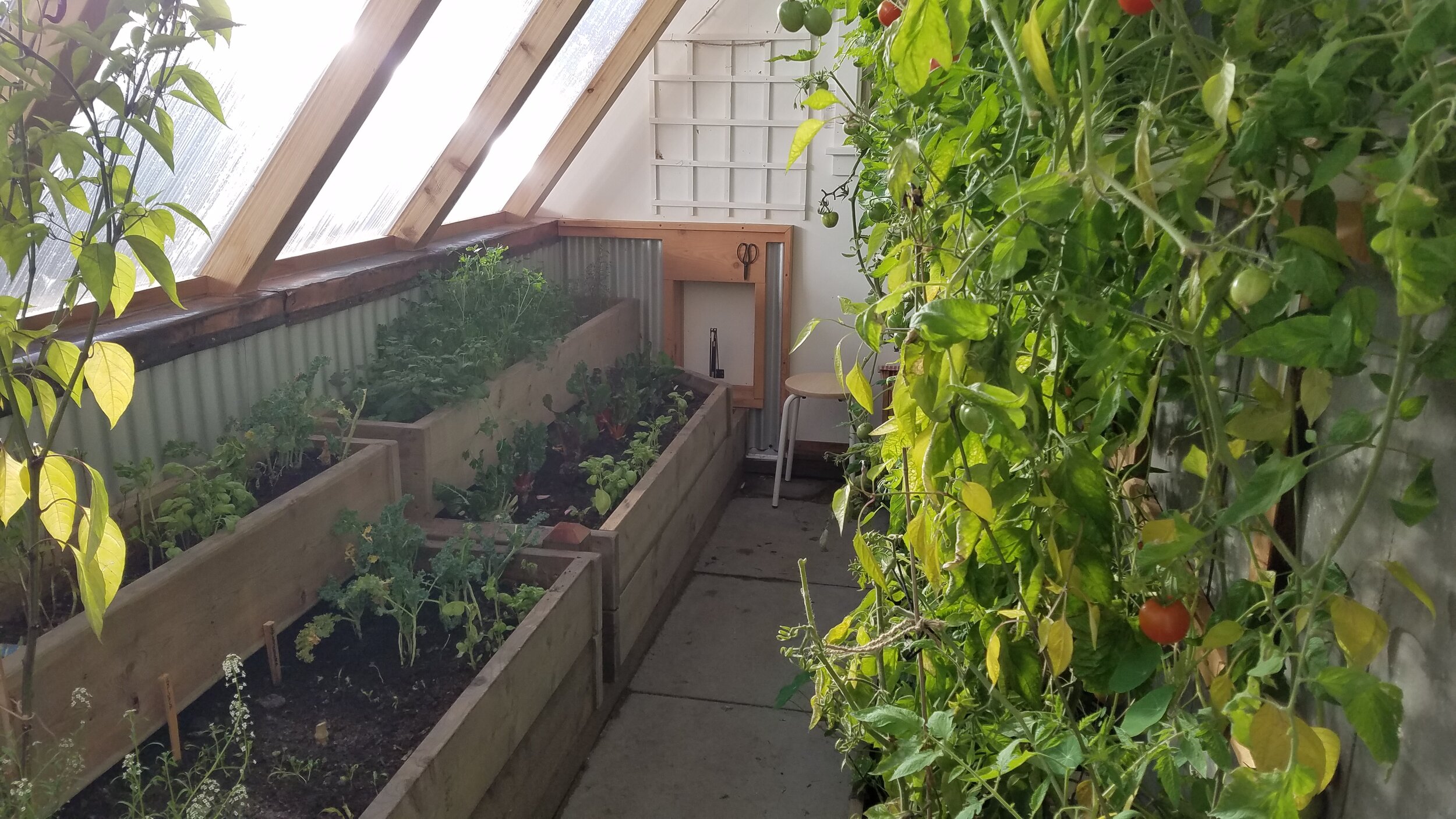Welcome to a series of blogs about Cultivate Cochrane president Jackie Skrypnek’s backyard greenhouse building process. The intent is to share a realistic account of one couple’s experience to help inspire and inform other community members in their own season-extending, food-producing ventures.
A full summer has come and gone and it seems we’ve left fall behind us as well. It’s a good time to report back on how our little greenhouse performed in its first year!
When we put our fledgling tomatoes, peppers, and herbs in the ground in the spring it was hard to imagine the veritable jungle we’d end up with a couple of months down the road. The north wall of tomatoes was such a jungle in fact that I had to take the whole second tier (the pots on the shelf) out and house them elsewhere. The passive solar environment seemed to supercharge growth and we already had ripe tomatoes in June.
We enjoyed a long season of cucumbers, hot peppers, sweet peppers, tomatoes, basil and a few other herbs. The sheer bulk of plants didn’t leave much room for a person to sit, but at that time of year things were green and warm outside anyway so we weren’t particularly craving time in a greenhouse. The solar roof fans kicked in nicely when things heated up, and the lower heat-activated vents would slowly open, too. The elbow doesn’t push them wide open, though, so the amount of cool air that can enter is less than we had hoped. We simply opened the window and the door window most days and closed them at night - a fine solution as long as someone was around.
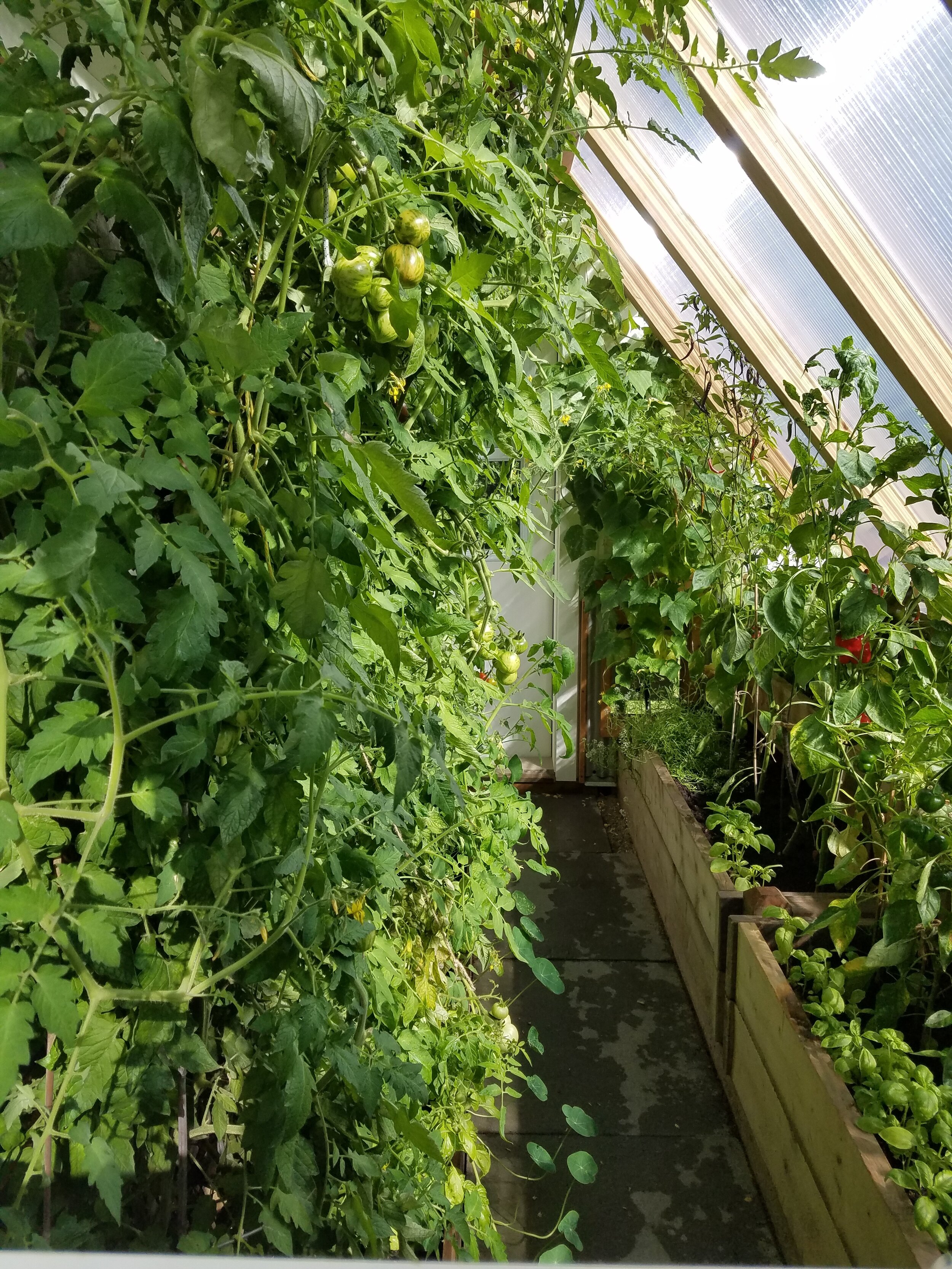
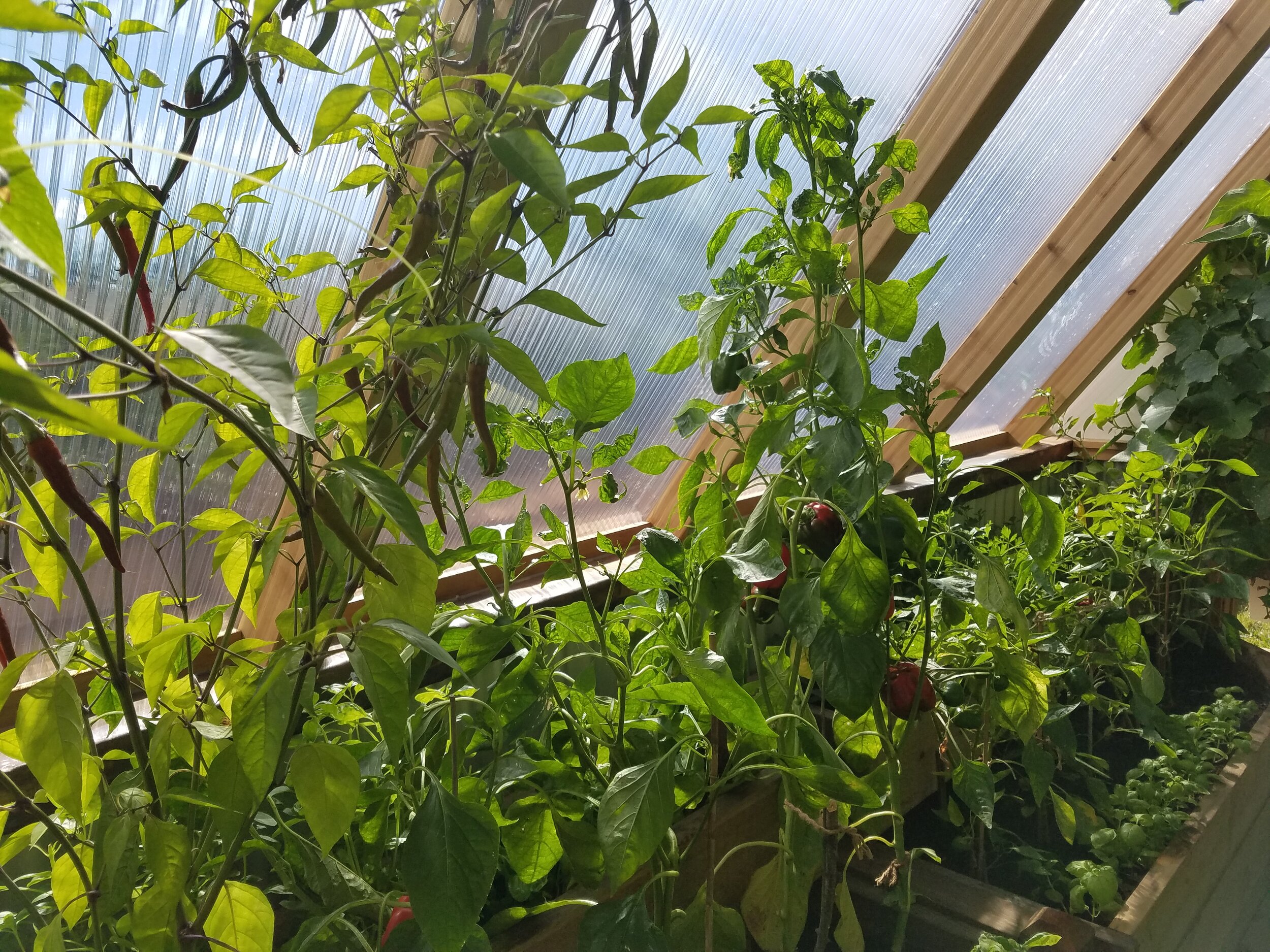
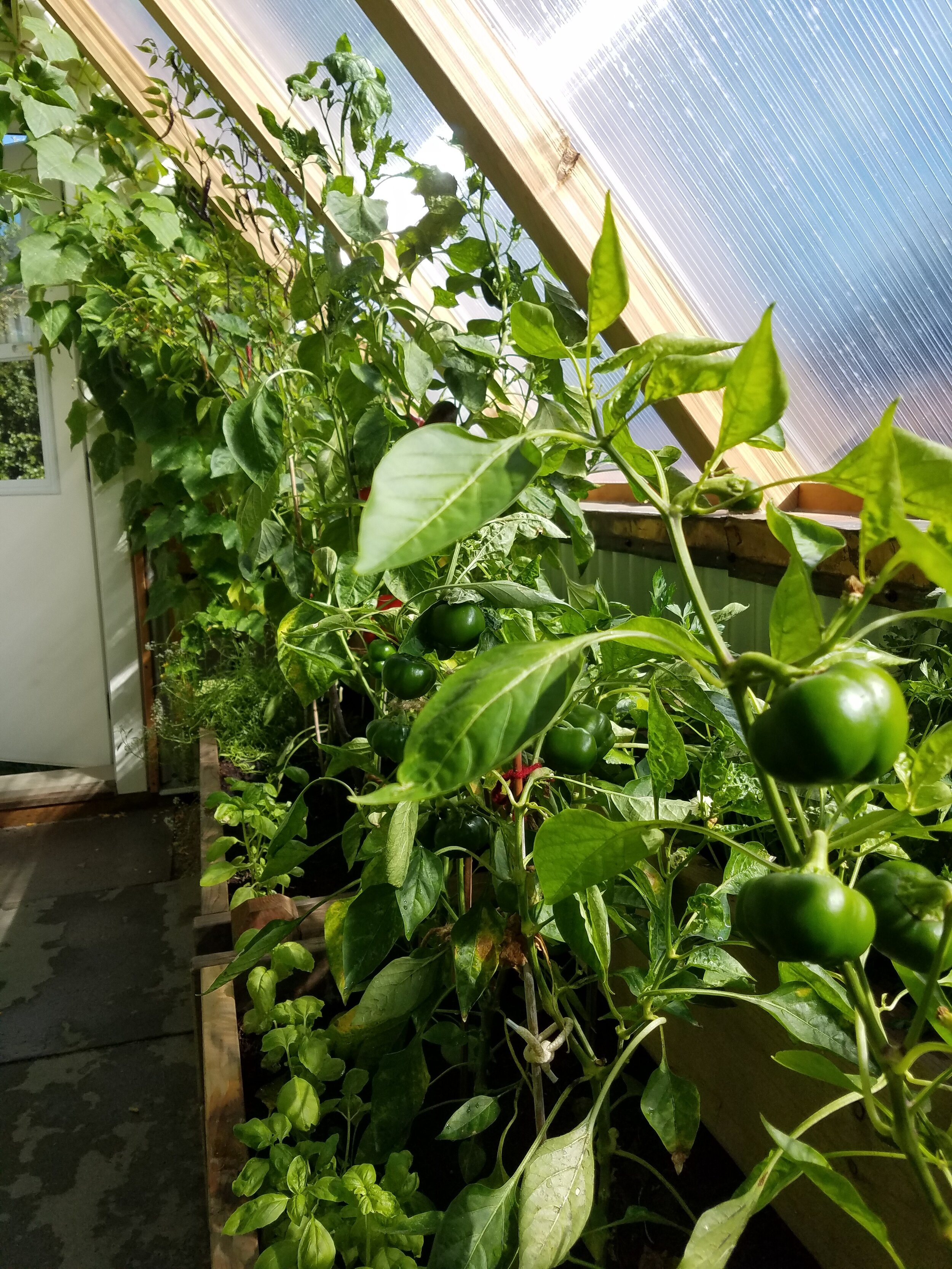
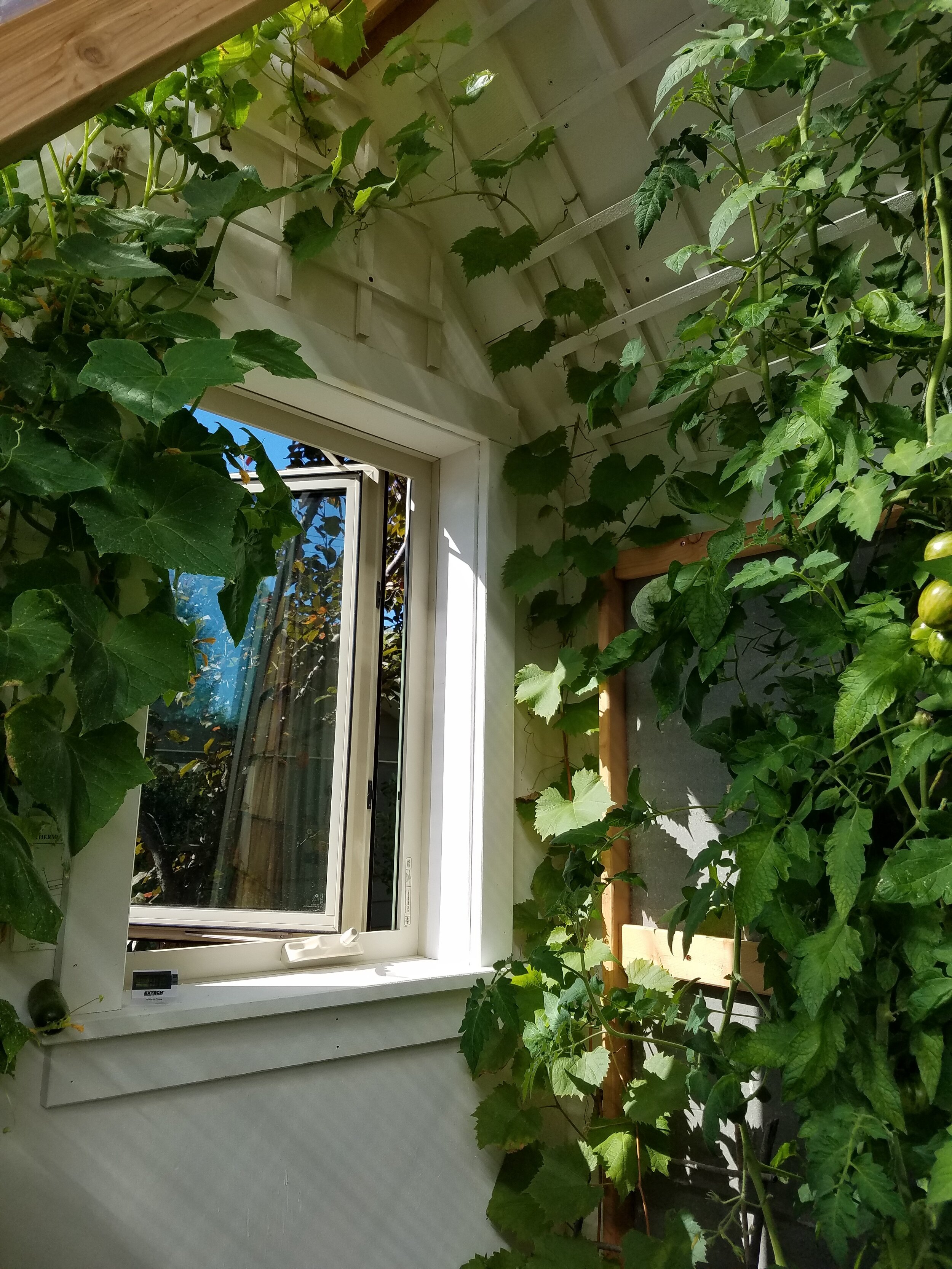
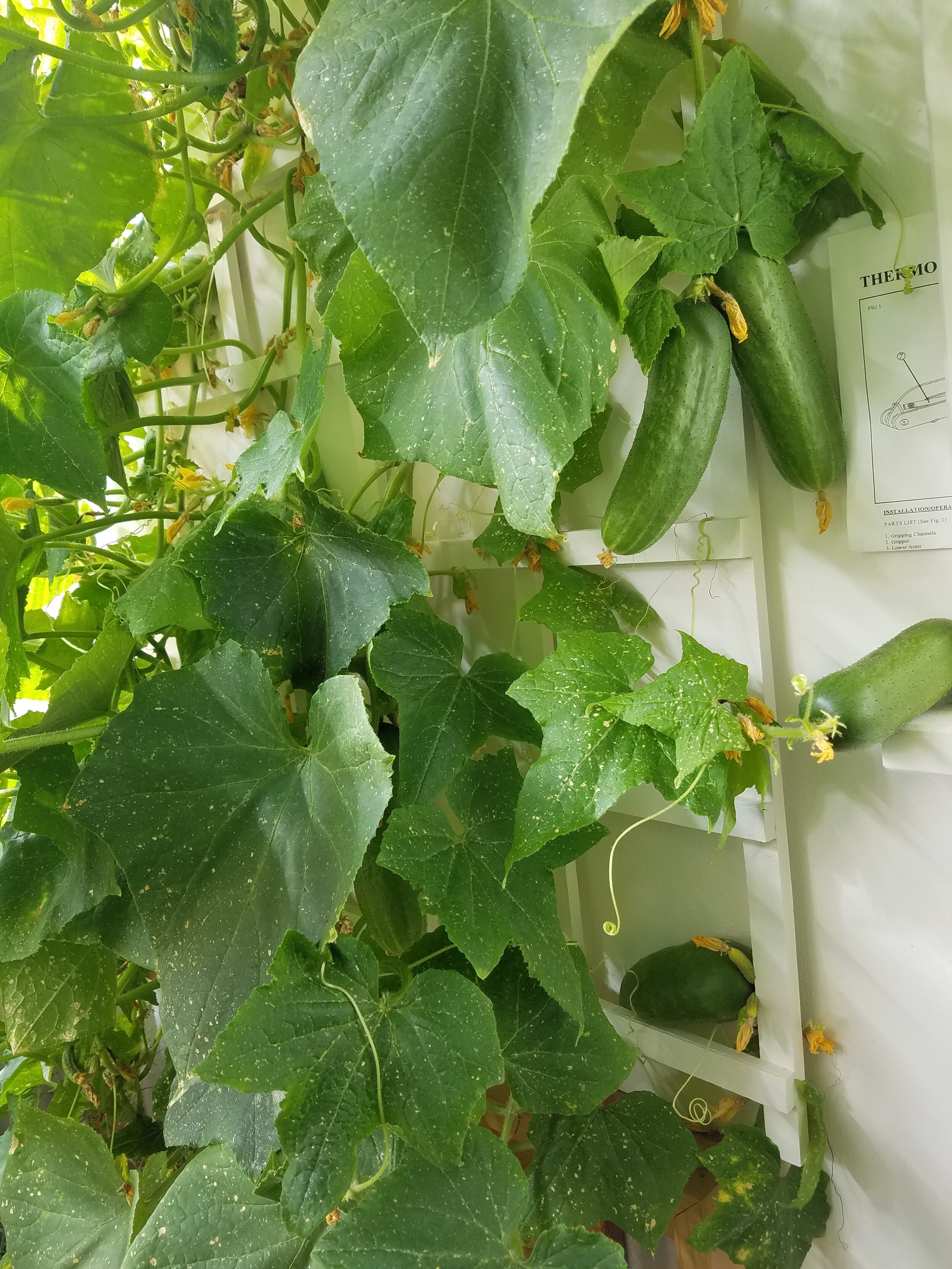
About mid-summer, I found myself battling aphids on the sweet peppers and a few adjacent plants with a homemade soap spray - to very limited success. Eventually I pulled the plug and just cut those plants out so the little green pests wouldn’t spread further. In the enclosed space of a greenhouse where an infestation can take over, it’s a challenge to handle it effectively while also following organic principles for the health of your food and soil. Something to investigate for next year!
For the most part, we happily went about our summer thrilled with our harvest, opening the greenhouse up on hot days and closing it tightly for the night to keep it nice and toasty. But while we fixated on making sure our plants didn’t get cold, a different, more deadly problem crept up on us. Mold and mildew began to afflict the cucumbers, followed by some herbs, and eventually to a smaller extent the tomatoes. The cucumbers succumbed totally and had to be removed (but not before we’d eaten heaps of them fresh and made pickles and relish for the winter). We had been too fastidious about heat retention at the expense of ventilation and the resulting humidity brought our plants ill-health. Likely we were keeping the soil too moist as well. Lesson learned!
Although I intended on keeping track of exactly how much produce we got out of less than 100 square feet, the summer got so busy that plan fell by the wayside. Suffice it to say, though, we haven’t had to go a day without a tomato since June, the freezer holds several batches of pesto, and we have enough homemade hot sauce to last the year, among other harvests. Plus, more recently, we’ve enjoyed a bit of chard and kale transplanted to the greenhouse from the garden outside.
What we really wanted to know (and you likely do, too!) is how long can this passive solar greenhouse go before it freezes inside. Well, we cheated a tiny bit and added a small amount of heat for the two nights in October that dipped to about -20ºC figuring that if we got the plants past that little cold spell they may still have several weeks to thrive. And that was in fact the case…until last night. Without further supplemental heat, things hadn’t frosted and what we didn’t lose to mildew (tomatoes, parsley, lemon balm, rosemary, hot peppers, kale, chard, nasturtiums) was still green and healthy up until about a day ago. How far into the colder months we can go depends, of course, on how cold it dips outside, but also very much on how sunny it is. With its steep south face, the greenhouse has no trouble warming up when the sun shines, even if it’s bitter cold outside, but without daytime sun, it’s just not able to recharge with heat in order to fend off frost overnight. That’s exactly what happened yesterday; the interior was holding at just above 0ºC after a cold night, but it was an entirely cloudy day so it barely inched up a degree before nightfall. That wasn’t enough to get it through last night’s -17ºC. Today the sun is beating in and it’s easily 22ºC in the greenhouse…but it’s too late; anything frost-tender is finished.
A final harvest of tender plants on November 7th
One thing is for sure, this is the perfect time of year to enjoy the greenhouse as a sitting space. It’s less crowded with plants and the temperature tends to be pleasantly warm while providing shelter from the often biting winds.
So, we have some kinks to work out, but I’d say we’re exceedingly glad to have created this structure that is extending our growing season significantly while being a pleasure to spend time in. We have a long winter ahead of us - the perfect time to contemplate what worked well and what didn’t. Some things we’ll do differently next year:
Plan for a single tier of tomatoes trained vertically to the ceiling
Allow more ventilation, even at the expense of some heat loss
Keep the soil less moist (water less - phew!)
Consider making room for a crop of cool-weather greens to be seeded in late summer (by fall, the light is insufficient for them to get a good start)
Investigate mildew-resistant plant varieties
Consider adding a thermal blanket to retain more heat on colder nights
While we’re sitting in front of the wood stove working out next summer’s greenhouse plan, we hope you’re in a cozy space of your own dreaming of ways you might produce just a little more of your own sustenance in a way that suits you!


